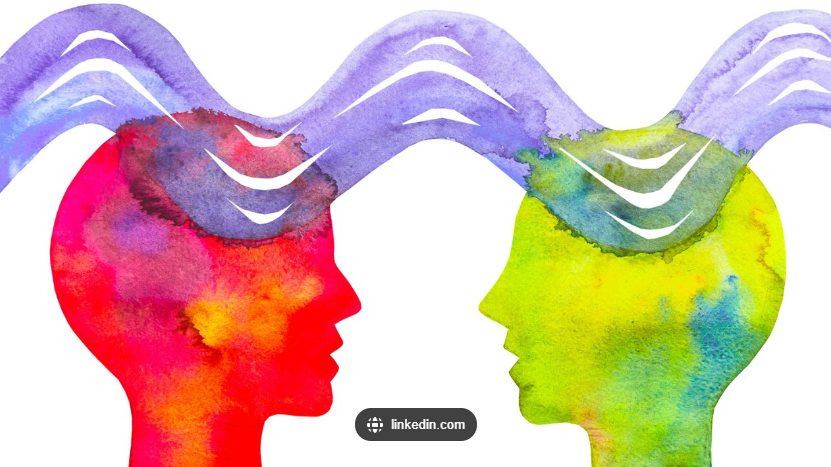
Tailored teaching methods empower quiet students through confidence-building exercises.
1. Implementing Emotional Intelligence for Effective Teaching
In today's dynamic business environment, effective communication is no longer merely about conveying information; it's about building relationships, navigating complex interactions, and fostering understanding. Emotional intelligence (EI) has emerged as a critical factor in achieving these goals, particularly in the field of business communication education. This article explores the multifaceted role of EI in teaching business communication, providing insights into its significance, practical applications, and strategies for development. By understanding and implementing EI principles, instructors can cultivate more engaging, supportive, and successful learning environments, preparing students for thriving careers in the business world.
2. Understanding Emotional Intelligence in Education
Emotional intelligence, as defined by Salovey and Mayer (1990), is the ability to perceive, understand, manage, and utilize emotions effectively. It involves being aware of our own emotions, understanding those of others, and using this emotional knowledge to guide our thinking and actions. In the context of teaching business communication, EI enables instructors to navigate their own emotions, effectively understand students' needs, and foster a positive learning atmosphere conducive to effective communication and skill development.
2.1 Key Components of Emotional Intelligence
Drawing from Goleman's (1995) model, five key components of EI are particularly relevant to teaching business communication:
Self-Awareness: Recognizing one's own emotional state, understanding the impact of emotions on behavior, and identifying triggers that influence emotional responses.
Empathy: Understanding others' feelings and perspectives, actively listening to their concerns, and responding with sensitivity and care.
Self-Regulation: Managing one's emotions and behaviors effectively, remaining calm under pressure, and responding constructively to challenging situations.
Social Skills: Building and maintaining healthy relationships, communicating effectively, resolving conflicts constructively, and collaborating effectively in teams.
Motivation: Having a strong internal drive to achieve goals, maintaining enthusiasm and passion for teaching, and inspiring students to strive for excellence.
2.2 The Relevance of EI in Business Communication Education
Research by Jennings and Greenberg (2009) highlights that teachers with higher EI create more supportive classroom environments, leading to improved student outcomes. In business communication courses, where interpersonal skills and effective communication are paramount, the instructor's EI can significantly influence students' learning experiences and future professional success. Students learn not only by absorbing information but also by observing and emulating the communication styles of their instructors.
3. Specific Emotional Skills for Teaching Business Communication
3.1 Self-Awareness
Example: An instructor who is self-aware can recognize their own frustration when students are disengaged and, instead of reacting impulsively, can address the root cause calmly. This might involve reflecting on the lesson plan and adjusting teaching methods to better engage students.
Research Insight: A study by Brackett et al. (2010) found that teachers with higher emotional self-awareness reported less burnout and greater job satisfaction. This highlights how self-awareness can not only benefit students but also contribute to the instructor's own well-being.
3.2 Empathy
Example: A business communication instructor demonstrating empathy when a student struggles with public speaking can offer tailored support, encouraging the student to overcome anxiety through gradual exposure and positive reinforcement. This might involve providing the student with additional practice opportunities, offering feedback in a supportive manner, and helping them develop personalized strategies for managing their anxiety.
Research Insight: Cornelius-White (2007) meta-analysis showed that teacher empathy was associated with increased student participation and motivation. Empathy creates a safe space for students to learn and grow, fostering a more inclusive and productive classroom environment.
3.3 Self-Regulation
Example: During a heated class debate on a controversial business ethics case, an emotionally intelligent instructor remains calm, moderating the discussion without bias. They ensure that diverse viewpoints are respected and explored constructively, facilitating a respectful and productive dialogue.
Research Insight: Sutton and Wheatley (2003) review suggests that teachers' ability to regulate their emotions is crucial for creating a positive classroom climate. By managing their own emotions effectively, instructors can create a more harmonious environment where students feel safe to express their ideas and engage in productive discussions.
3.4 Social Skills
Example: Facilitating group work effectively in a business communication course requires strong social skills to resolve conflicts, engage quiet students, and maintain productivity. An instructor might use techniques like role rotation, structured feedback sessions, and conflict-resolution strategies to ensure all voices are heard and contributions are valued.
Research Insight: Zins et al. (2004) compilation of studies demonstrates that social and emotional learning programs improve students' social-emotional skills and academic performance. Investing in social skills development for both instructors and students creates a more collaborative and supportive learning environment.
3.5 Motivation
Example: A motivated business communication instructor engages students by integrating real-world case studies, current events, and relevant industry trends to keep the content exciting and relevant. They might invite guest speakers from industry, organize field trips to local businesses, or encourage students to participate in real-world projects.
 Enterprising instructors elevate business communication courses with real-world insights from visiting experts.[/caption]
Enterprising instructors elevate business communication courses with real-world insights from visiting experts.[/caption]
Research Insight: Kunter et al. (2008) found that teacher enthusiasm was positively related to students' interest and enjoyment in the subject matter. By demonstrating genuine passion and engagement, instructors can inspire and motivate students to develop a deeper understanding and appreciation for business communication.
4. How Emotional Intelligence Improves Teaching Business Communication
4.1 Enhancing Classroom Management
EI helps instructors create a more positive and productive learning environment by:
Recognizing and Addressing Individual Student Needs: By being attuned to student emotions, instructors can identify those struggling and provide tailored support, creating a more equitable and inclusive learning experience.
Diffusing Potential Conflicts Before They Escalate: By developing strong social skills and a sense of empathy, instructors can effectively resolve conflicts constructively, preventing escalation and fostering a more collaborative classroom environment.
Creating a Culture of Respect and Open Communication: When instructors model respectful communication, students are more likely to follow suit. This creates a positive and safe environment for open dialogue, idea sharing, and constructive feedback.
Example: An instructor who perceives a drop in student engagement might introduce interactive exercises or discussions, break down complex concepts into smaller chunks, or utilize technology-enhanced learning tools to re-engage the class rather than continuing with the same lecture format.
4.2 Effective Feedback Delivery
Emotionally intelligent feedback is:
Constructive and Growth-Oriented: Feedback focuses on specific behaviors or skills, offering constructive suggestions for improvement rather than dwelling on shortcomings.
Tailored to Individual Student Needs: Feedback is personalized to address each student's unique strengths, weaknesses, and learning style.
Delivered with Empathy and Respect: Feedback is delivered in a compassionate and respectful manner, recognizing the student's efforts and fostering a supportive learning environment.
Example: Instead of saying, "Your presentation lacked structure," a high-EI instructor might say, "You've got strong points—let's work on organizing them more clearly for maximum impact. What do you think about using a problem-solution format?" This approach is more constructive and encourages the student to actively participate in the improvement process.
4.3 Building Student-Instructor Relationships
Strong emotional connections with students foster a positive learning environment where students feel supported and are more likely to take academic risks.
Example: Instructors who check in with students individually, understand their goals, and encourage open communication build stronger, more trustful relationships. This might involve regular office hours, one-on-one progress meetings, or even informal chats before or after class to build rapport and show genuine interest in their students' well-being and academic progress.
4.4 Navigating Difficult Conversations
EI equips instructors to handle sensitive issues with tact and effectiveness.
Example: When discussing a student's underperformance, an emotionally intelligent instructor might first ask questions to understand if external factors are affecting the student before proposing solutions. They might say, "I've noticed a change in your participation lately. Is everything okay? I'm here to support you if you're facing any challenges." This approach demonstrates empathy and a willingness to help the student overcome any obstacles they may be facing.
5. Developing Emotional Intelligence in Instructors
5.1 Self-Reflection
Keep a Teaching Journal: Regularly record emotional responses, challenging situations, and successful strategies. This practice can enhance self-awareness and identify areas for growth.
Regularly Assess Personal Strengths and Areas for Improvement: Utilize self-assessment tools or seek feedback from peers and mentors to gain a deeper understanding of your own EI strengths and areas for development.
Seek Feedback from Peers and Students: Constructive feedback from colleagues and students can provide valuable insights into your communication style and emotional impact on the learning environment.
5.2 Professional Development
Attend Workshops Focused on EI in Education: Workshops can provide practical strategies and tools to develop EI skills specific to the teaching profession.
Participate in Role-Playing Exercises to Practice EI Skills: Role-playing scenarios can help you develop emotional awareness and practice communication skills in challenging situations.
Engage in Ongoing Learning About EI Through Books, Courses, and Seminars: Continuously expanding your knowledge of EI will enhance your ability to apply these principles in the classroom.
5.3 Peer Collaboration
Establish a Mentoring Program with Experienced, Emotionally Intelligent Instructors: Mentorship can provide valuable guidance and support in developing your EI skills and navigating challenging situations.
Create Opportunities for Peer Observation and Feedback: Observe colleagues who demonstrate strong EI skills and solicit constructive feedback on your own teaching practices.
Form a Professional Learning Community Focused on EI in Teaching: Collaborate with other educators to share ideas, strategies, and resources related to EI in the classroom.
5.4 Mindfulness Practices
Incorporate Meditation or Deep Breathing Exercises into Daily Routine: Mindfulness practices can enhance self-awareness, emotional regulation, and stress management.
Practice Mindfulness During Teaching to Stay Present and Aware: Bring your attention to the moment, responding to students with presence and understanding rather than allowing distractions to cloud your judgment.
Use Mindfulness Apps or Guided Sessions to Develop Consistent Practice: Utilize technology-aided mindfulness tools to support your ongoing practice and integrate mindfulness into your daily life.
6. Benefits of Fostering Emotional Intelligence in Teaching Business Communication
6.1 Improved Student Engagement

Tailored teaching methods empower quiet students through confidence-building exercises.
Example: An instructor who understands individual student challenges can adapt their teaching methods, encouraging quieter students to participate through low-stakes, confidence-building exercises like think-pair-share activities or online discussion boards.
Research Insight: Reyes et al. (2012) found that classrooms with higher emotional climate scores showed higher levels of student engagement. EI contributes to a more positive and supportive learning environment, where students feel valued and are more likely to engage actively in the learning process.
6.2 Higher Student Retention
Example: A business communication instructor who shows concern for student well-being and academic growth helps students feel more connected to the course and the instructor. This might involve regular check-ins, personalized feedback, and creating a supportive class community.
Research Insight: O'Keeffe (2013) review suggests that a sense of belonging and positive student-faculty interactions contribute significantly to student retention. Building strong relationships with students fosters a sense of belonging and support, reducing the likelihood of them dropping out of the course.
6.3 Better Conflict Resolution
Example: When a conflict arises in group work, an emotionally intelligent instructor facilitates a discussion that encourages understanding and cooperation, rather than letting tensions fester. They might use techniques like active listening, perspective-taking exercises, and conflict resolution strategies to help students reach a resolution.
Research Insight: Schonert-Reichl (2017) overview indicates that teachers with higher EI are better equipped to handle classroom conflicts and teach conflict resolution skills to students. EI equips instructors to model effective conflict resolution, empowering students to develop these essential communication skills.
6.4 Enhanced Professional Development
Example: An emotionally intelligent instructor who demonstrates empathy and leadership in the classroom is more likely to be chosen for leadership roles in academic or administrative capacities. They might be asked to lead workshops, mentor new faculty, or contribute to curriculum development.
Research Insight: Wong et al. (2010) study found that EI was positively related to job performance and career advancement in various professions, including education. By developing their EI, instructors not only enhance their teaching effectiveness but also improve their overall professional growth and career prospects.
7. Challenges and Solutions in Implementing EI in Business Communication Courses
7.1 Time Constraints
Challenge: Instructors may feel pressure to cover content, leaving little time for EI development.
Solution: Integrate EI skills into existing lessons. For example, use group projects to teach both business writing and emotional intelligence simultaneously. Incorporate short, focused activities throughout the course to foster self-awareness, empathy, and communication skills.
7.2 Resistance to Change
Challenge: Some instructors or institutions may be skeptical about the importance of EI.
Solution: Share research on the benefits of EI in education and business. Pilot EI-focused teaching methods in one course and compare outcomes with traditional approaches. Demonstrate the positive impact of EI on student engagement, performance, and retention, highlighting the tangible benefits of implementing these principles.
7.3 Lack of Training
Challenge: Many instructors may not have formal training in EI.
Solution: Develop in-house training programs or partner with EI experts to provide workshops. Encourage peer-to-peer learning and mentoring. Facilitate opportunities for instructors to learn from each other and share best practices for incorporating EI into their teaching.
8. The Student Perspective: Developing EI Through Business Communication Courses
While this article focuses on instructors, it's crucial to recognize that business communication courses offer an excellent opportunity for students to develop their own EI skills.
8.1 Incorporating EI into Curriculum
Include lessons on active listening and empathy in communication modules: Emphasize the importance of understanding and responding to emotional cues in verbal and nonverbal communication.
Teach conflict resolution strategies as part of team communication skills: Equip students with the tools and techniques to navigate conflicts effectively and productively.
Incorporate self-reflection exercises after presentations or group projects: Encourage students to analyze their own emotional responses and communication effectiveness, identifying areas for improvement.
8.2 Translating EI Skills to the Workplace
Example: Students can learn to apply EI skills in professional scenarios through role-playing exercises, case studies, and internships. For instance, practicing how to give constructive feedback, navigate a difficult conversation with a colleague, or lead a team meeting effectively.
Research Insight: Lopes et al. (2006) study found that individuals with higher EI reported better workplace relationships and higher job performance. By equipping students with EI skills, we empower them to build stronger professional relationships, navigate complex workplace dynamics, and achieve greater success in their careers.
9. Adapting EI to Current Trends in Business Communication
9.1 Remote Work and Digital Communication
Teach students to recognize emotional cues in written communication and video calls: Help students develop strategies for decoding emotional signals in digital communication, considering tone of voice, emoji usage, and written language.
Develop strategies for building rapport and trust in virtual teams: Explore methods for establishing strong connections and fostering a sense of community within virtual teams.
9.2 Cross-Cultural Communication
Incorporate cultural intelligence (CQ) alongside EI to prepare students for global business interactions: Teach students to navigate cultural differences, understand diverse perspectives, and communicate effectively across cultures.

Unlocking your students’ global potential: Develop students' cultural intelligence (CQ) alongside emotional intelligence (EI) to empower them in diverse business environments.
Use diverse case studies and examples to broaden students' perspectives: Expose students to a range of cultural contexts and communication styles, preparing them for a globalized business environment.
9.3 AI and Emotional Intelligence
Discuss the role of EI in human-AI collaboration: Explore how EI enables humans to bring unique strengths and skills to the workplace, such as empathy, creativity, and critical thinking.
Explore how EI gives humans a unique advantage in an increasingly automated workplace: Highlight the importance of EI in developing strong interpersonal skills, navigating complex social interactions, and fostering meaningful relationships, which are skills that machines cannot easily replicate.
Key Takeaways
Emotional intelligence is a crucial component of effective teaching in business communication. By developing and applying EI skills, instructors can create more engaging, supportive, and successful learning environments. This not only enhances the teaching experience but also equips students with vital skills for their future careers in business.
As we navigate the evolving landscape of business communication education, the importance of EI will only grow. Instructors who prioritize their own EI development and integrate these skills into their teaching will be better prepared to meet the challenges of modern education and prepare their students for success in the business world.
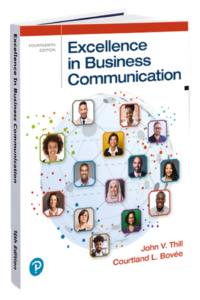
Why Excellence in Business Communication Is the Perfect Textbook for Emotionally Intelligent Instructors
Excellence in Business Communication is the ideal text for instructors who value emotional intelligence (EI) in teaching, as it aligns with key EI principles such as self-awareness, empathy, self-regulation, and motivation. The text fosters a learning environment where emotional awareness, interpersonal dynamics, and constructive communication thrive, mirroring the realities of today's business world. It provides a comprehensive approach to communication that goes beyond technical skills, addressing the human aspects of interaction that are critical in modern business.
For instructors who prioritize EI, this textbook offers a wealth of real-world scenarios and case studies. These activities engage students in reflective and interactive learning, encouraging them to apply EI skills like active listening, empathy, conflict resolution, and social skills. The text goes beyond technical communication by helping students understand and navigate the emotional and psychological dynamics that shape professional interactions, making it an essential resource for fostering emotional intelligence alongside communication proficiency.
The textbook's structure also supports emotionally intelligent teaching through interactive discussions, group activities, and reflective exercises. These tools help instructors foster a positive, inclusive classroom environment, reinforcing student engagement, trust, and skill-building through growth-oriented, empathetic feedback. This encourages students to actively participate, develop interpersonal skills, and build confidence in their communication abilities.
Excellence in Business Communication is more than just a textbook for teaching communication skills—it’s a resource that supports the development of emotional intelligence in both instructors and students. By offering emotionally intelligent learning experiences, it equips students with the tools needed to foster meaningful relationships, navigate complex social interactions, and develop the emotional resilience critical for success in the modern business environment.
References
Brackett, M. A., Palomera, R., Mojsa-Kaja, J., Reyes, M. R., & Salovey, P. (2010). "Emotion-regulation ability, burnout, and job satisfaction among British secondary-school teachers." Psychology in the Schools, 47(4), 406-417.
Cornelius-White, J. (2007). "Learner-centered teacher-student relationships are effective: A meta-analysis." Review of Educational Research, 77(1), 113-143.
Goleman, D. (1995). Emotional Intelligence. Bantam Books.
Jennings, P. A., & Greenberg, M. T. (2009). "The prosocial classroom: Teacher social and emotional competence in relation to student and classroom outcomes." Review of Educational Research, 79(1), 491-525.
Kunter, M., Tsai, Y. M., Klusmann, U., Brunner, M., Krauss, S., & Baumert, J. (2008). "Students' and mathematics teachers' perceptions of teacher enthusiasm and instruction." Learning and Instruction, 18(5), 468-482.
Lopes, P. N., Grewal, D., Kadis, J., Gall, M., & Salovey, P. (2006). "Evidence that emotional intelligence is related to job performance and affect and attitudes at work." Psicothema, 18, 132-138.
O'Keeffe, P. (2013). "A sense of belonging: Improving student retention." College Student Journal, 47(4), 605-613.
Reyes, M. R., Brackett, M. A., Rivers, S. E., White, M., & Salovey, P. (2012). "Classroom emotional climate, student engagement, and academic achievement." Journal of Educational Psychology, 104(3), 700-712.
Salovey, P., & Mayer, J. D. (1990). "Emotional intelligence. Imagination, Cognition and Personality," 9(3), 185-211.
Schonert-Reichl, K. A. (2017). "Social and emotional learning and teachers."The Future of Children, 27(1), 137-155.
Sutton, R. E., & Wheatley, K. F. (2003). "Teachers' emotions and teaching: A review of the literature and directions for future research." Educational Psychology Review, 15(4), 327-358.
Wong, C. S., Wong, P. M., & Peng, K. Z. (2010). "Effect of middle-level leader and teacher emotional intelligence on school teachers' job satisfaction: The case of Hong Kong." Educational Management Administration & Leadership, 38(1), 59-70.
Zins, J. E., Weissberg, R. P., Wang, M. C., & Walberg, H. J. (Eds.). (2004). "Building academic success on social and emotional learning: What does the research say?" Teachers College Press.
Read more
 In an era where AI and technology increasingly intersect with creative expression, Apple's "Crush" commercial for the iPad Pro struck a particularly sensitive nerve. The visually arresting ad featured various symbols of artistic creation – from musical instruments to books – being systematically destroyed and compressed into an iPad, all while Sonny and Cher's "All I Ever Need Is You" provided an ironically cheerful soundtrack.
In an era where AI and technology increasingly intersect with creative expression, Apple's "Crush" commercial for the iPad Pro struck a particularly sensitive nerve. The visually arresting ad featured various symbols of artistic creation – from musical instruments to books – being systematically destroyed and compressed into an iPad, all while Sonny and Cher's "All I Ever Need Is You" provided an ironically cheerful soundtrack.





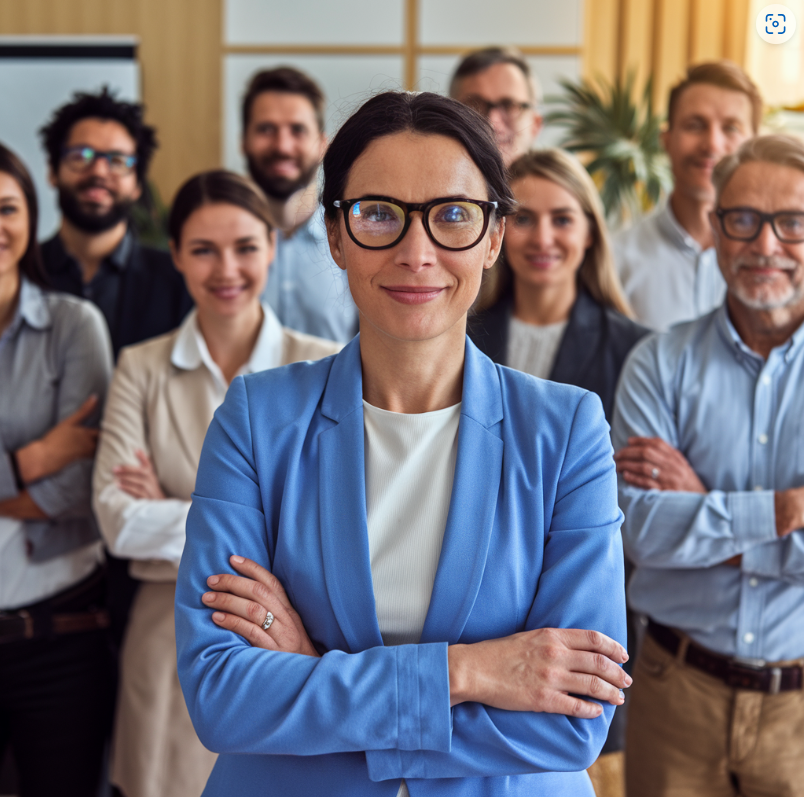
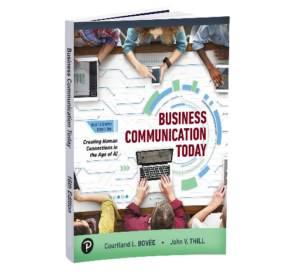


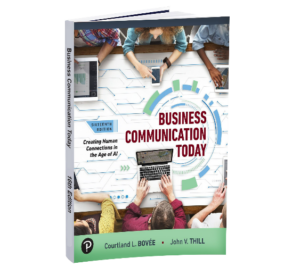





 Enterprising instructors elevate business communication courses with real-world insights from visiting experts.[/caption]
Enterprising instructors elevate business communication courses with real-world insights from visiting experts.[/caption]





